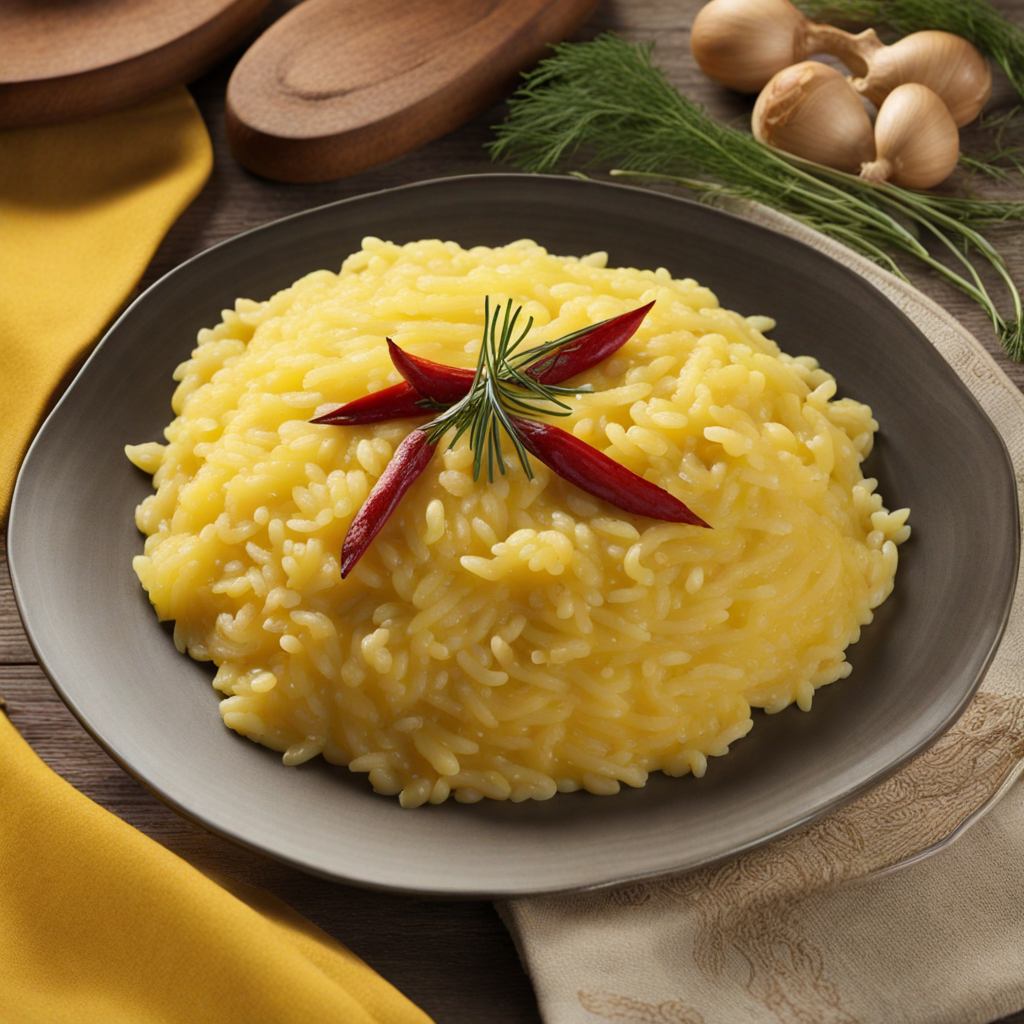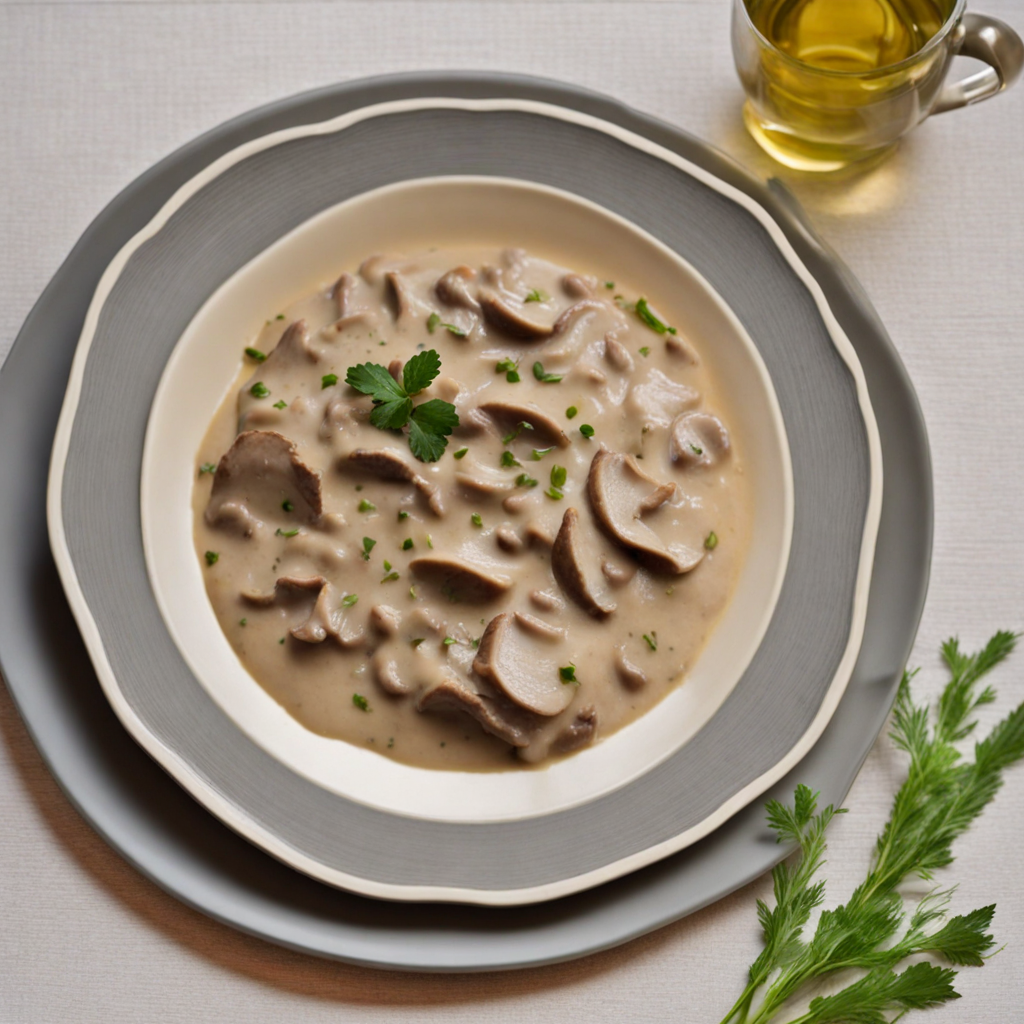Saffron Risotto
Saffron Risotto is a luxurious dish that beautifully showcases the rich culinary traditions of Switzerland, blending creamy textures with the delicate essence of saffron. The star ingredient, saffron, is harvested from the vibrant crocus flower and lends a golden hue to the risotto, creating a visually stunning plate. The rice, typically Arborio or Carnaroli, is cooked slowly to achieve that coveted al dente bite, absorbing the fragrant broth while releasing its starch to create a velvety consistency. As the saffron infuses into the dish, it imparts a subtle, earthy flavor that is both unique and captivating, making each bite a delightful experience.
How It Became This Dish
The History of Risotto al Zafferano: A Swiss Culinary Delight Introduction Risotto al zafferano, or saffron risotto, is a dish synonymous with luxury and comfort, often evoking images of sun-drenched Italian landscapes. However, it also has strong ties to Switzerland, particularly in the region of Ticino, where its preparation and enjoyment reflect the intricate interplay of cultural traditions and historical influences. This dish is not just a meal; it is a narrative woven into the fabric of Swiss cuisine, showcasing the region's agricultural bounty, historical trade routes, and the melding of Italian and Swiss culinary practices. Origin and Ingredients The roots of risotto can be traced back to northern Italy, particularly the Lombardy region, where rice cultivation flourished due to the marshy lands around the Po River. The introduction of rice to Europe came from the Middle Eastern and Asian trade routes during the Middle Ages, with the first documented rice cultivation in Italy occurring in the 14th century. By the 19th century, rice varieties, particularly Arborio, Carnaroli, and Vialone Nano, became staples in Italian kitchens. Saffron, the golden spice that transforms risotto into a dish of opulence, has a storied history of its own. It is derived from the stigmas of the Crocus sativus flower, which is native to the Mediterranean region. Saffron has been used for millennia, not only as a flavoring but also for its medicinal properties and dyeing capabilities. In Switzerland, particularly in the Italian-speaking region of Ticino, saffron began to be cultivated in the 16th century, thanks to the favorable climate and soil conditions. The combination of rice and saffron in risotto al zafferano reflects the agricultural resources of both Italy and Switzerland. The dish itself is a harmonious blend of creamy Arborio rice, rich broth, and the distinct, earthy flavor of saffron, often finished with butter and Parmesan cheese. This unpretentious yet luxurious dish showcases the simplicity of its ingredients while celebrating their quality. Cultural Significance Risotto al zafferano holds a special place in Swiss culture, particularly in Ticino, where it is often served during family gatherings and festive occasions. The dish embodies the essence of Swiss hospitality, emphasizing communal dining and the joy of sharing. It is not merely a recipe; it is part of the cultural identity of the region, resonating with the traditions of Italian-speaking Swiss communities. In Ticino, risotto is often paired with local specialties, such as sausages or seasonal vegetables, further enriching the culinary experience. It is common to find this dish at celebrations, weddings, and public gatherings, symbolizing abundance and togetherness. The use of saffron elevates the dish, making it a centerpiece that captures the attention of guests and reflects the host's care and effort in preparing a meal that signifies love and warmth. Development Over Time The evolution of risotto al zafferano over the centuries mirrors broader changes in Swiss society and its food culture. In the early 20th century, as Swiss communities became more urbanized and industrialized, traditional agricultural practices began to diminish. However, the love for regional dishes like risotto remained strong, leading to a renewed interest in local ingredients and traditional cooking methods. The post-World War II era saw a culinary renaissance in Switzerland, fueled by increased travel and cultural exchange. The rise of Italian restaurants in urban centers introduced risotto al zafferano to a broader audience, allowing Swiss residents to appreciate the dish beyond their local communities. Chefs began experimenting with variations, incorporating local ingredients such as mushrooms, wild game, or vegetables, thereby creating a tapestry of flavors that reflected both tradition and innovation. In the late 20th and early 21st centuries, the farm-to-table movement gained momentum, emphasizing the importance of sourcing local, sustainable ingredients. This trend had a significant impact on how risotto al zafferano was prepared and served. Chefs and home cooks alike began to prioritize quality over quantity, focusing on organic rice and saffron sourced from local farmers. This shift not only enhanced the flavor of the dish but also fostered a deeper connection between producers and consumers. Risotto al Zafferano Today Today, risotto al zafferano continues to be a beloved dish in Switzerland, celebrated for its elegance and versatility. It has found its way onto the menus of gourmet restaurants as well as family kitchens, symbolizing both tradition and modernity. Chefs in Switzerland now embrace a variety of cooking techniques, from traditional stovetop risottos to contemporary interpretations that incorporate sous-vide or pressure cooking. Moreover, the rise of food tourism has further solidified risotto al zafferano's status as a culinary icon. Food enthusiasts travel to Ticino to experience the authentic flavors of the region, often participating in cooking classes or local festivals celebrating saffron harvests. Events like the Saffron Festival in the village of Bioggio showcase the cultural significance of this spice and its integral role in local cuisine, drawing visitors eager to taste the famed risotto and learn about its preparation. Conclusion Risotto al zafferano is more than just a dish; it is a testament to the rich agricultural heritage and culinary traditions of Switzerland, particularly in the Italian-speaking region of Ticino. Its origins in rice cultivation and saffron farming, combined with its cultural significance in communal dining and celebration, have solidified its place in Swiss gastronomy. As it continues to evolve, embracing both tradition and modern innovation, risotto al zafferano remains a cherished symbol of Swiss culinary identity, inviting all who partake to savor its rich history and the warmth of shared meals.
You may like
Discover local flavors from Switzerland







